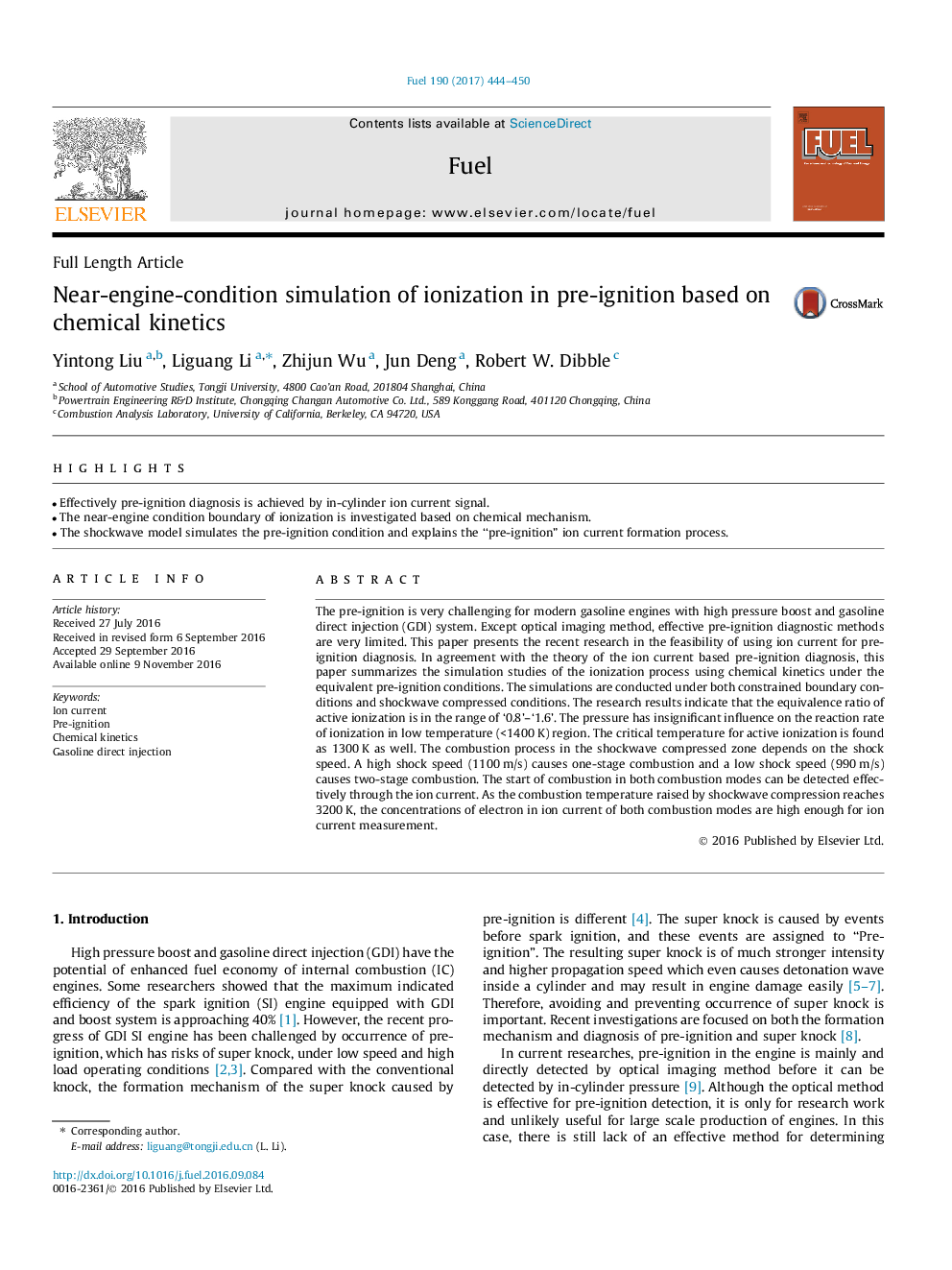| Article ID | Journal | Published Year | Pages | File Type |
|---|---|---|---|---|
| 6475645 | Fuel | 2017 | 7 Pages |
â¢Effectively pre-ignition diagnosis is achieved by in-cylinder ion current signal.â¢The near-engine condition boundary of ionization is investigated based on chemical mechanism.â¢The shockwave model simulates the pre-ignition condition and explains the “pre-ignition” ion current formation process.
The pre-ignition is very challenging for modern gasoline engines with high pressure boost and gasoline direct injection (GDI) system. Except optical imaging method, effective pre-ignition diagnostic methods are very limited. This paper presents the recent research in the feasibility of using ion current for pre-ignition diagnosis. In agreement with the theory of the ion current based pre-ignition diagnosis, this paper summarizes the simulation studies of the ionization process using chemical kinetics under the equivalent pre-ignition conditions. The simulations are conducted under both constrained boundary conditions and shockwave compressed conditions. The research results indicate that the equivalence ratio of active ionization is in the range of '0.8'-'1.6'. The pressure has insignificant influence on the reaction rate of ionization in low temperature (<1400Â K) region. The critical temperature for active ionization is found as 1300Â K as well. The combustion process in the shockwave compressed zone depends on the shock speed. A high shock speed (1100Â m/s) causes one-stage combustion and a low shock speed (990Â m/s) causes two-stage combustion. The start of combustion in both combustion modes can be detected effectively through the ion current. As the combustion temperature raised by shockwave compression reaches 3200Â K, the concentrations of electron in ion current of both combustion modes are high enough for ion current measurement.
